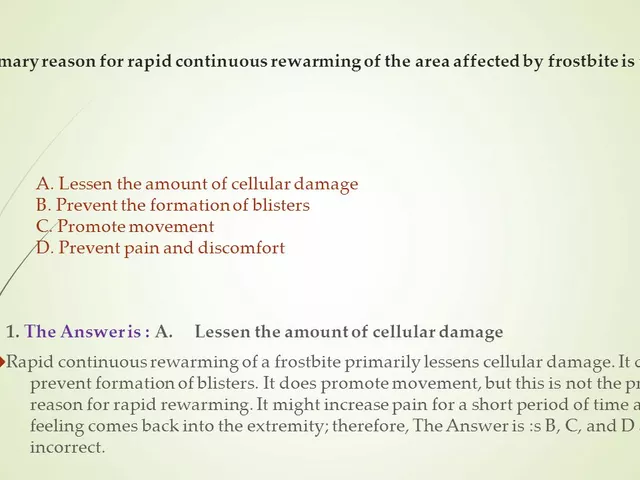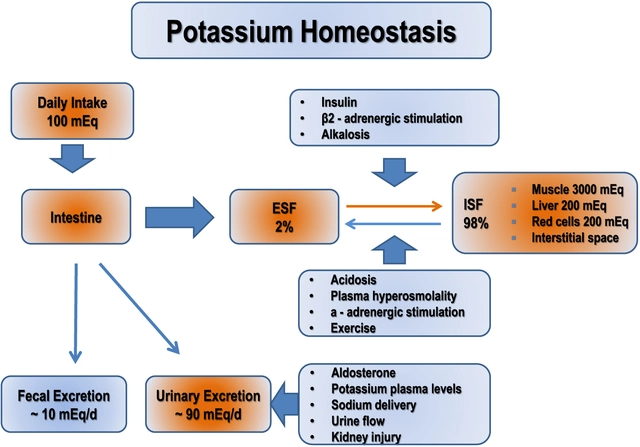
When you hear about GLP-1 agonists, you might think of diabetes. But right now, the biggest buzz isn’t about blood sugar-it’s about weight loss. People are losing 10%, 15%, even 20% of their body weight on these medications. And it’s not magic. It’s science. But it’s not simple, either. There are real, powerful benefits-and real, sometimes tough, side effects. If you’re considering one of these drugs, you need to know what you’re signing up for.
How GLP-1 Agonists Actually Work
These drugs aren’t appetite suppressants in the old-school sense. They don’t make you feel full by tricking your brain. They work with your body’s natural system. GLP-1 is a hormone your gut makes after you eat. It tells your brain, "Enough food," slows down how fast your stomach empties, and helps your pancreas release insulin when needed. GLP-1 agonists like semaglutide and tirzepatide are synthetic versions that last longer and hit harder.That’s why you feel less hungry. Your brain gets the signal to stop eating sooner. Your stomach holds food longer, so you don’t get hungry again after two hours. And because your body handles sugar better, your energy levels often stabilize. It’s not about willpower. It’s about rewiring your biology.
Studies show people on semaglutide (Wegovy) lose an average of 15.8% of their body weight over 68 weeks. That’s not a few pounds. For someone who weighs 200 pounds, that’s over 30 pounds lost. Tirzepatide (Zepbound) pushes that even higher-nearly 21% in some trials. These numbers aren’t outliers. They’re consistent across large, well-run studies.
Weight Loss That Lasts (If You Keep Taking It)
Here’s the hard truth: these drugs don’t cure obesity. They manage it. Like blood pressure or cholesterol meds, you need to keep taking them to keep the results. When people stop, the weight comes back. Fast.One major trial, STEP 4, showed that after stopping semaglutide, most people regained about 60% of the weight they lost within a year. That’s not failure. It’s biology. Your body fights to return to its old weight. The drug was helping override that. Once it’s gone, the old signals come back.
That’s why doctors say these aren’t short-term fixes. They’re long-term tools. If you want to keep the weight off, you need to plan for ongoing use. That means thinking about cost, access, and how you’ll handle side effects over months and years-not just the first few months.
Side Effects: Nausea, Diarrhea, and the First Few Months
Let’s be real: the side effects are the main reason people quit. Up to 80% of users get nausea, especially in the first 4 to 8 weeks. About half get diarrhea. A third throw up. Abdominal pain is common too. These aren’t mild. They can be debilitating.But here’s what most people don’t tell you: they get better. A lot better. By week 12, most side effects drop by 50% or more. The key is slow titration. Starting at 0.25 mg weekly and slowly increasing over 16 to 20 weeks makes a huge difference. Jumping to the full dose too fast? That’s how you end up in the ER.
People on Reddit and Drugs.com say the same thing: "Weeks 3 to 8 were awful. I almost quit." Then they kept going. And it got easier. Eating smaller meals, avoiding fatty or fried foods, staying hydrated, and using anti-nausea meds like ondansetron for a few days can help you push through.
It’s not just stomach issues. Some report fatigue, dizziness, or constipation. Rarely, there are more serious risks-like gallbladder disease or pancreatitis. But these are uncommon. The biggest red flag? A personal or family history of medullary thyroid cancer. If that’s you, don’t take these drugs. Period.

How They Compare to Other Weight Loss Drugs
Older weight loss pills like orlistat (Xenical) work by blocking fat absorption. You end up with oily, embarrassing stools-and only lose 5 to 10% of your weight. Phentermine-topiramate (Qsymia) helps with appetite but can cause brain fog, tingling, and isn’t safe during pregnancy.GLP-1 agonists beat them all in head-to-head trials. Semaglutide lost 15.8% of body weight. Liraglutide (Saxenda) lost 6.4%. That’s a 9.4% difference. Tirzepatide? 20.9%. And unlike the others, GLP-1 agonists also lower heart attack and stroke risk in people with diabetes or heart disease. That’s huge. You’re not just losing weight-you’re protecting your heart.
But they’re not perfect. They require injections. Semaglutide is weekly. Liraglutide is daily. There’s no oral version approved yet for weight loss (though one is coming). And they’re expensive.
The Cost Problem: $1,300 a Month and Insurance Battles
Wegovy costs about $1,350 a month in the U.S. without insurance. Ozempic, the same drug for diabetes, is cheaper-around $935. But insurance rarely covers Wegovy for weight loss unless you have a BMI over 30 and a related condition like high blood pressure or prediabetes.As of 2023, only 37% of private insurance plans in the U.S. cover Wegovy for obesity. That’s a huge barrier. Many people can’t afford it. Some try to buy Ozempic off-label, but that’s risky. Pharmacies are running low. Novo Nordisk, the maker, had 18-month backorders in late 2023. You can’t just walk in and get it.
Compare that to older drugs like phentermine, which costs $10 to $50 a month. The gap isn’t just financial-it’s about access. People who need these drugs most often can’t get them.

Who Should Consider Them? Who Should Avoid Them?
If you have a BMI of 30 or higher (or 27 with a condition like high blood pressure or sleep apnea), and you’ve tried diet and exercise without lasting results, GLP-1 agonists are a valid option. The Endocrine Society and the American Diabetes Association now list them as first-line treatment for obesity.But they’re not for everyone. Avoid them if you:
- Have a personal or family history of medullary thyroid cancer
- Have multiple endocrine neoplasia syndrome type 2
- Are pregnant or planning to get pregnant (data is limited)
- Can’t commit to weekly injections and long-term use
- Have severe stomach problems like gastroparesis
Also, don’t expect them to work without lifestyle changes. You still need to eat better and move more. The drug makes it easier, but it doesn’t replace healthy habits.
What’s Coming Next
The field is moving fast. Oral versions of semaglutide are in late-stage trials. If approved, they could change everything-no more needles, easier access. Tirzepatide (Zepbound) is already approved and outperforming semaglutide in weight loss. More drugs are on the way.But supply hasn’t caught up. Demand is exploding. In the U.S., over 2 million people are now using GLP-1 agonists for weight loss. That’s up from almost nothing five years ago. The market could hit $100 billion by 2030.
What’s clear is this: GLP-1 agonists are changing how we treat obesity. They’re not a miracle. But they’re the most effective tool we’ve had in decades. And for many, they’re the difference between lifelong struggle and real, lasting change.
Do GLP-1 agonists work for everyone?
No. They work best for people with obesity or overweight with related health conditions. Effectiveness varies by individual genetics, starting weight, and how well you tolerate side effects. About 1 in 4 people don’t lose at least 5% of their body weight. If you don’t see results after 12 weeks on the full dose, talk to your doctor about alternatives.
Can I take GLP-1 agonists if I have type 2 diabetes?
Yes, and many people do. Semaglutide and tirzepatide were first approved for diabetes and are still widely used for that. In fact, people with diabetes often get better coverage for them. These drugs improve blood sugar control, reduce heart risks, and help with weight loss-all at once. They’re now considered first-line treatment for type 2 diabetes with obesity.
How long does it take to see weight loss results?
Most people start seeing changes within 4 to 8 weeks. But the biggest losses happen between months 3 and 6. The full effect usually takes 6 to 12 months. Patience is key. The dose starts low and builds up over time, so don’t expect dramatic results right away.
Are there any long-term risks I should worry about?
The biggest known risk is thyroid C-cell tumors seen in rodent studies, but no clear link exists in humans. The FDA requires a black box warning, but experts agree the risk for people is likely very low. Long-term data beyond 3 years is still limited, but ongoing trials are tracking heart health, kidney function, and cancer risk. So far, benefits outweigh risks for most patients.
What happens if I stop taking the medication?
Most people regain 50% to 70% of lost weight within a year of stopping. That’s why doctors treat these like chronic disease medications-not short-term fixes. If you stop, you’re not failing-you’re just returning to your body’s natural set point. The best way to keep weight off is to continue treatment, unless your doctor advises otherwise.
Can I drink alcohol while on GLP-1 agonists?
Moderate alcohol is usually okay, but it can worsen nausea and increase the risk of low blood sugar, especially if you have diabetes. Alcohol also adds empty calories, which can slow weight loss. Many users report better results when they cut back or avoid alcohol entirely during the first few months of treatment.
Is there a cheaper alternative to Wegovy?
Liraglutide (Saxenda) is slightly cheaper and approved for weight loss, but it’s less effective and requires daily injections. Generic versions don’t exist yet. Some people try to get Ozempic (semaglutide for diabetes) off-label, but this is not approved for weight loss and may be illegal or unsafe depending on your location and pharmacy policy. Insurance coverage is your best bet for affordability.






There are 14 Comments
robert cardy solano
Been on semaglutide for 8 months. Lost 42 lbs. Nausea was brutal weeks 3-6. Took ondansetron like candy. Now I eat like a normal person without craving junk. No magic, just biology working right. Still take it every Sunday like clockwork.
Brianna Groleau
I’m from a family where obesity ran rampant. My mom had bariatric surgery. My dad died of a heart attack at 52. I tried everything. Keto, intermittent fasting, Weight Watchers… nothing stuck. Then I got on Wegovy. It didn’t fix me. It just gave me back the chance to try. I’m not ‘cured.’ But I’m alive again.
Rebecca Cosenza
Just stop already. This is just another pharmaceutical scam.
rob lafata
Oh sweet Jesus, here we go again. The ‘magic weight loss drug’ circus. You people are so gullible. You think a needle is gonna fix your emotional eating? Nah. You’re just outsourcing your willpower to Big Pharma while they charge you $1,300 a month for a glorified GLP-1 peptide. And don’t even get me started on the thyroid cancer black box warning they bury in the fine print. You’re not losing weight-you’re gambling with your pancreas.
Sarah Swiatek
Wow. So dramatic. I get it-you’re scared. But let’s be real. The data doesn’t lie. In the STEP trials, people on semaglutide had a 20% lower risk of major cardiovascular events compared to placebo. That’s not a side effect. That’s a life-saving effect. And yeah, nausea sucks. But 80% of people say it improves after 12 weeks. That’s not ‘pharma brainwashing.’ That’s physiology. If you’re gonna judge, at least read the damn papers.
Nick Naylor
Let’s not ignore the supply chain crisis here. Novo Nordisk has a monopoly. They’re rationing Ozempic like it’s gold. Meanwhile, people with type 2 diabetes are getting denied because ‘it’s being diverted to weight loss.’ This isn’t healthcare-it’s a capitalist dystopia. The FDA approved it for diabetes first. Now they’re weaponizing scarcity to justify price gouging. And don’t tell me insurance is the answer. I’ve been denied 5 times. My BMI is 38. I have hypertension. I’m not a ‘lifestyle failure.’ I’m a victim of corporate greed.
Dave Wooldridge
Did you know the FDA approved these drugs after a 2021 whistleblower exposed data manipulation in Novo’s animal studies? They suppressed the thyroid tumor data for YEARS. And now you’re all chanting ‘it’s safe’ like it’s a cult? Wake up. They’re testing these on people like guinea pigs. You think the FDA cares if you live or die? They care about stock prices. And you’re paying for it. Every. Single. Week.
serge jane
It’s funny how we treat weight like a moral failing. Like if you’re obese you’re lazy or weak. But we don’t shame diabetics for needing insulin. We don’t tell heart patients to just ‘eat less fat.’ We give them medicine. Why? Because we understand biology. GLP-1 agonists aren’t about vanity. They’re about correcting a broken system. Your body isn’t broken. It’s just defending itself against a world that’s designed to make you fat. The drug isn’t the problem. The environment is. And until we fix that, we’re just treating symptoms with expensive needles.
Pawan Jamwal
USA thinks it owns medicine now. India has better traditional ways. Ayurveda, yoga, fasting-no needles, no $1300 bills. You people are weak. You want a pill for everything. In my village, people walk 10km to market, eat lentils, no sugar. No drugs needed. You got fat because you’re lazy. Not because science failed you.
Cinkoon Marketing
My sister’s on tirzepatide. Lost 58 lbs. But she’s also doing therapy for emotional eating. She’s not just taking the shot. She’s learning to sit with discomfort. That’s the real secret. The drug lowers the barrier. But you still have to show up. And honestly? It’s not even about the weight. It’s about feeling like you can breathe again.
Lemmy Coco
i just started 0.25mg last week. i’m scared. i’ve never taken an injection before. my hands shake. i keep thinking i’m gonna die. but i’m gonna try. i’ve been 300lbs for 12 years. i just want to play with my niece without being out of breath. pls pray for me
Rusty Thomas
OMG I just got approved!! 😭 I cried in the pharmacy. I’ve been waiting 14 months. My insurance finally said yes. I’m gonna be one of those ‘before and after’ pics on Reddit. I’m not just losing weight-I’m getting my life back. 🙏✨
Matthew McCraney
They’re putting tracking chips in these pens. I know someone who got a weird text from Novo Nordisk after his first injection: ‘Your glucose levels are trending high. Are you eating carbs?’ What the hell? This isn’t medicine. It’s surveillance. They’re building a database of fat people. Next thing you know, your employer will get a report. ‘John is non-compliant. No promotion.’
Bill Camp
These drugs are a national disgrace. We’re turning Americans into chemical zombies just so they can fit into skinny jeans. We’re not fixing obesity-we’re masking it. What about real solutions? Food deserts? School lunches? Wage stagnation? Nah. Let’s just inject rich people with $1,300 vials and call it progress. This isn’t healthcare. It’s a luxury product for the wealthy who can afford to be thin.
Write a comment
Your email address will not be published. Required fields are marked *